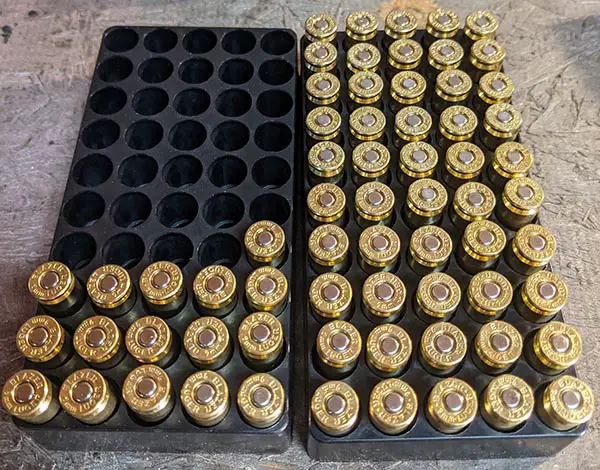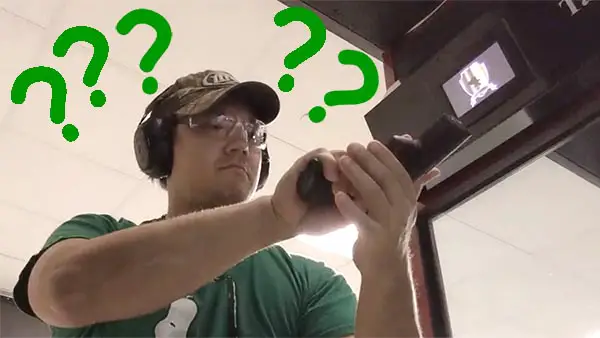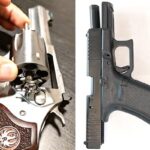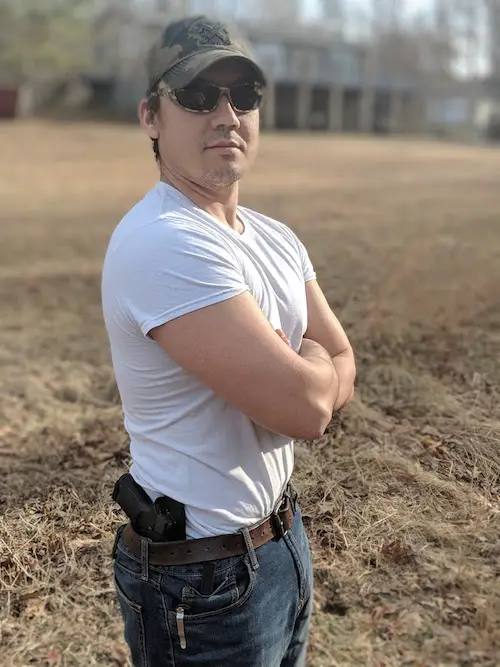Misfires are some of the most misunderstood problems of the firearm world. Admittedly, I sometimes use the term hastily and incorrectly to convey any malfunction or stoppage. A cartridge can fail to discharge for various reasons. However, today I’m covering the differences between misfires vs. hangfires vs. squib loads.
A misfire is a malfunction where the ignition of the primer or powder charge fails to occur. Ultimately a misfire is a failure to discharge the bullet. However, a hangfire occurs when the cartridge discharges fully after a significant delay. Similarly, squib loads involve the ignition of the primer, powder charge, or both. However, the bullet lodges in the bore and never leaves the muzzle during a squib.
Table of Contents
What Is A Hangfire?
A hangfire occurs when the combustion of the powder in a cartridge is delayed but ultimately the bullet exits the muzzle. However, powder charge combustion rates will vary and makes this type of malfunction extremely dangerous. Keep your firearm pointed in a safe direction for at least 30 seconds! Learn more about this on my concealed carry practice exam post.
What Causes A Hangfire
Usually, a hangfire can be traced back to either a problem with the powder or primer. Powder contamination can cause a hangfire by impeding the combustion rate for the powder charge. Additionally, a contaminated or defective primer can also cause a hangfire by not igniting the powder immediately.
A light strike is a type of misfire where insufficient force is applied by the firing pin to the primer. When a shooter experiences a hangfire it is unlikely due to a light strike on the primer. Usually, when a primer is struck it either does, or does not, have sufficient force to ignite the primer.
Diagnosing A Hangfire
Unfortunately, a hangfire is difficult to diagnose. Other than the eventual discharge of the cartridge, it mimics the symptoms of a squib load or light primer strike. Therefore, you should keep the muzzle of your firearm pointed in a safe direction while waiting for the prescribed amount of time.
What Is A Squib Load?
Unlike a hangfire, a squib load is when the primer of a cartridge is struck and insufficient force is generated by the burning of the powder charge to expel the bullet from the muzzle. Squibs can be extremely dangerous as they create a blockage in the barrel of your firearm.
What Causes A Squib Load
Similar to hangfires, a squib can be the result of a contaminated primer or powder charge. Contaminated powder may not burn completely or efficiently and thus generate less than ideal pressures.
However, more often than not, a squib is due to an insufficient powder drop (amount of powder in the cartidge). Again, when the powder charge is low, the generated forces are insufficient to complete the discharge of the bullet. Having no powder at all — I’ve learned from my reloading experience — can also result in a squib.
Diagnosing Squibs
A telltale sign of a squib load is the distinctive “pop” of the primer igniting. You may also notice a small bit of smoke. Usually this is immediately followed by a “boom” but this does not occur with a squib. Instead, the bullet (projectile) gets lodged in the bore of the firearm. Again, from experience, the bullet usually needs to be hammered out.
Additionally, the firearm may not run through the cycle of operaion during a squib. and you will experience less recoil.
How Often Do Misfires Happen?

How frequently a misfire occurs depends on a number of factors. Everything from the type of case material, the type of powder, the primer source, how the cartridge is constructed, and more. According to an interview of Black Hills Ammunition in Guns and Ammo, the rate of their misfires were 1 in 300,000.
Realistically, the procedures setup by each individual manufacturer (or reloader) can drastically impact the frequency of misfires, hangfires, and squibs. For instance, I’ve never had a problem with Remington, Winchester, or many other ammunition production companies.
However, at a gun show last year I bought some 9mm rounds from a company called “Top Shot” and out of the 500 rounds fired I experienced one squib load. Before the ammo shortage, I probably would have never fired their ammunition. But this illustrates the range of results you can get. Perhaps I was just unlucky.
When it comes to reloading, the numbers are dependent upon your own experience and protocols. Unfortunately, I’ve wasted a few primers when my powder drop wasn’t working. But I digress. Suffice it to say, predicting the frequency of misfires is near impossible due to the diversity of factors that can lead to one.
Hangfire & Squib Load Safety
If you experience any malfunction during a shooting exercise and the cartridge doesn’t discharge you should ALWAYS assume it is a hangfire. Keep your firearm pointed in a safe direction for the 30 seconds (more if you want to be extra safe).
Afterwards ensure the firearm is unloaded before proceeding. Examine the cartridge that resulted in the malfunction and see if the primer was struck and if the bullet is still seated in the cartridge.
Next you will need to field strip (disassemble) your firearm to visually inspect the barrel. If you are unable to field strip and visually inspect the barrel, you should raise your non-shooting hand to get the range safety officers (RSO) attention while keeping the muzzle pointed in a safe direction. Describe the situation to the RSO who should be able to assist.
If you experience a squib load or hangfire with factory ammunition, there may be a problem with the entire lot. Report this problem to the RSO and/or front desk of the range. You may be issued another box of ammunition or you may need to purchase more. The solution will be range specific.
Parting Shots
Hopefully you got the answers (and more) you were looking for with regard to the differences between misfires, hangfires, and squib loads. Hangfires and squib loads can be extremely dangerous. While they are generally infrequent, it’s important to handle them accordingly and give them the respect they deserve. If you’ve found this content helpful, please like and share the content or if you have input leave a comment.








